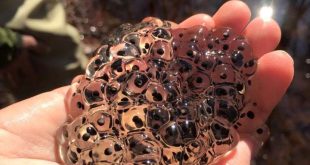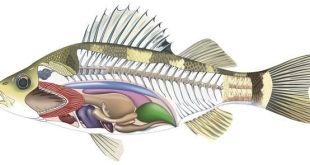The released egg is protected by a fairly tough chorion or egg case. Within this the cytoplasm and yolk are contained by a vitelline membrane. Often one or more oil globules are present. Fertilization occurs by a spermatozoon passing through a funnel-shaped micropyle leading to a fusion of the pronuclei …
Read More »Tag Archives: fishes
Fecundity and Egg Size of Fishes
It is not at all clear why some species have evolved a strategy of producing many small eggs, and others the opposite strategy of fewer, larger ones. The relationships between these characters and the implication for the species can be summarized (Blaxter, 1988) as follow: Fecundity and egg size are …
Read More »Maturation of Fishes
Vertebrates of both sexes possess a germinal epithelium consisting of germ and somatic cells. The gonads are mesodermal in origin and develop in close association with the nephric system. In elasmobranchs a lateral cortex gives rise to the ovary, and a more medial area becomes the testis. One of these …
Read More »Food Capture by Fishes
According to Karel Liem (1980) most of the enormous variety and range of foods eaten by fishes is obtained through only three basic feeding styles: ram feeding, suction feeding, and manipulation or biting. Virtually all species use one, and, because they are not mutually exclusive, most species use two of …
Read More »Digestive Enzymes of Fishes
Like other animals, fish possess an array of digestive enymes by which large macromolecular nutrients are broken down into smaller molecules that can be assimilated. Most fish possess seven main digestive enzymes – trypsin, maltase, amylase, two +aminopepsidases (carboxypepsidase a, carboxypepsidase b), lipase, and alkaline phosphatase. Almost all the major …
Read More »Foods and Characteristic Adaptations of Fishes
The vast majority of living fishes are predatory. Of some 1100 species of extant elasmobranchs, only 13 (1.2%) – the basking shark (Cetorhinus maximus), megamouth shark (Megachasma pelagios), whale shark (Rhincodon typus), manta ray (Manta birostris), and about nine species of devil rays (genus Mobula) – have forsaken the actively …
Read More »The Digestive Tracts of Fishes
The digestive tract of fishes is divided into four regions: the foregut (esophagus and stomach, if present), mid-gut, hindgut, and rectum. The foregut begins at the posterior boundary of the gill cavity or pharynx and includes the esophagus, the stomach, when present, and the pylorus. Typically, the esophagus is a …
Read More »Teeth of Fishes
Living Agnathan fishes possess conical, rasping tooth-like structures made of keratin, the same structural protein found in human hair and nails, on their tongue, rather than enamel covered, bony teeth typical of other vertebrates. The lamprey also has similar teeth around its mouth. They also have no identifiable esophagus or …
Read More »Food Choices of Fish
But optimal foraging strategies may not remain identical throughout an organism’s lifespan and many species exhibit a trophic ontogeny or shift in food types and sizes, or feeding styles at different stages in their life cycle. These are necessitated by the fishes own increase in size, by morphological developments or …
Read More »The Osmotic Problem of Fishes
Different fishes live in waters from almost distilled purity, to hypersaline ponds where they have difficulty keeping below the surface. The ability to live in such different waters is remarkable enough for stenohaline fish which do not move from a single environment, but, perhaps more striking, there are a good …
Read More » EazyBio: Educate, Elevate, Empower EazyBio: Educate, Elevate, Empower
EazyBio: Educate, Elevate, Empower EazyBio: Educate, Elevate, Empower









